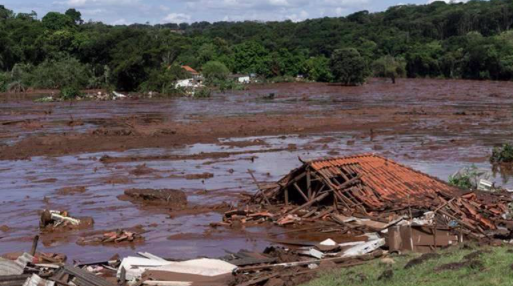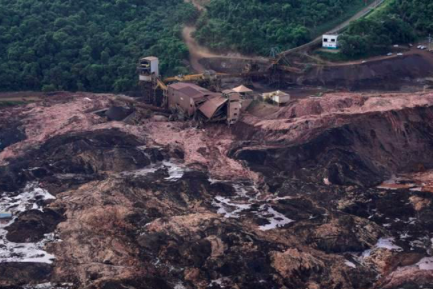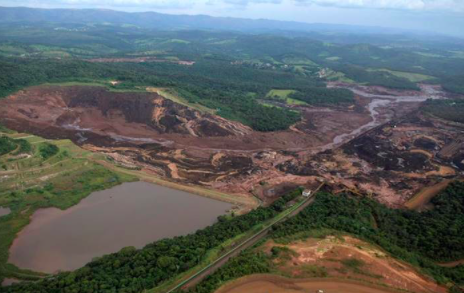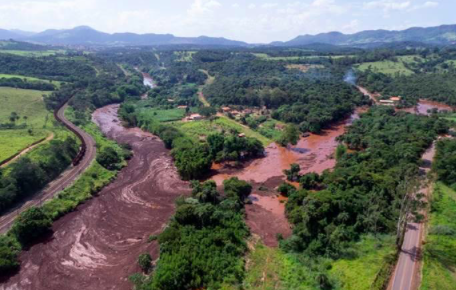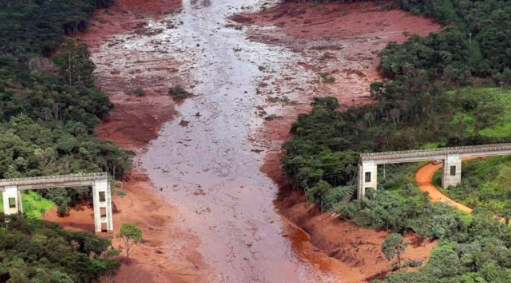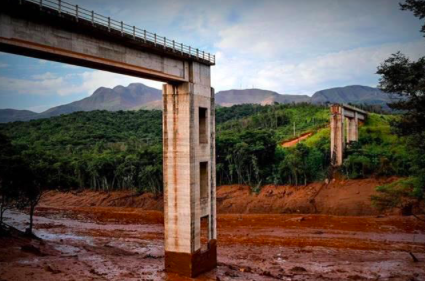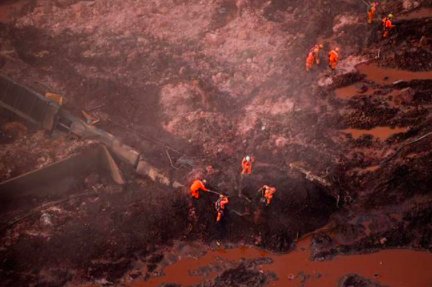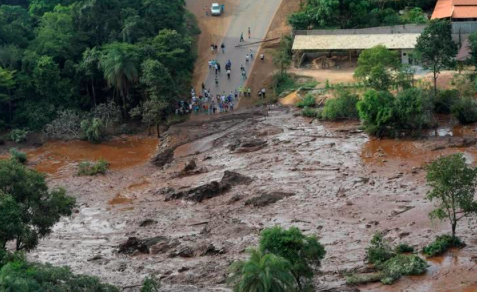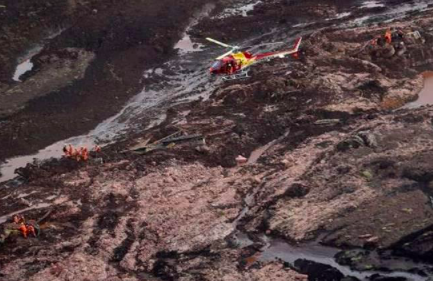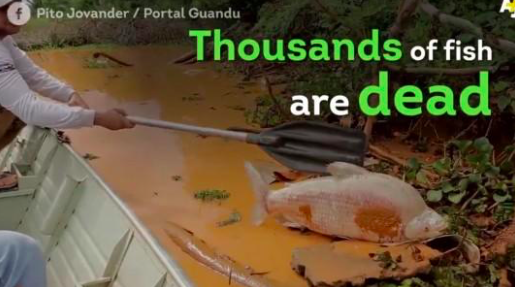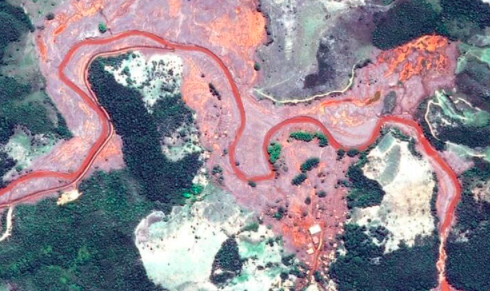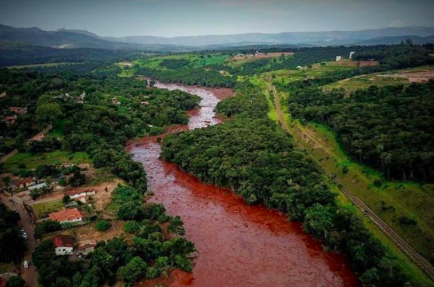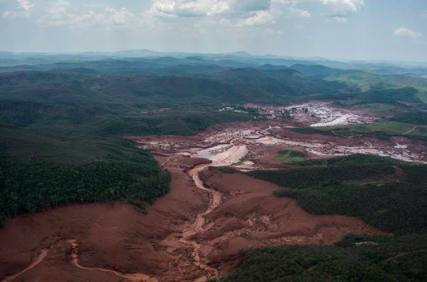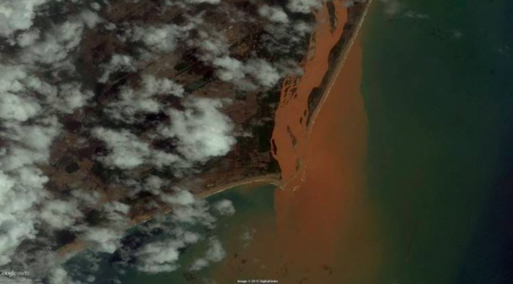The Experimental PolyMet Copper Sulfide Mine in Minnesota, the St Louis River, Lake Superior, and the Recent Brazilian Environmental Catastrophes
PolyMet, the St Louis River, Lake Superior, the Recent Brazilian Environmental Catastrophes and Why Minnesotans Should be Paying Close Attention to the News out of Brazil
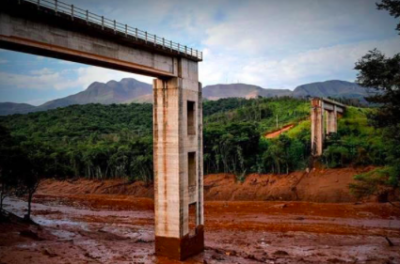
“ALL tailings ‘ponds’ are a problem. If they don’t breach and spill massive amounts of toxic sludge into the environment like at Mount Polley, they leach that contamination slowly, poisoning the waters and lands (and aquifers) around them for centuries.” – (Council of Canadians)
The two most recent Brazilian open-pit mine “accidents” that will be discussed in this extended-length Duty to Warn column, will probably require close to a trillion dollar death and disability benefits for just the following two categories:
1) the hundreds of dead and wounded miners (and their grieving families); and
2) the massive amounts of property damaged that was owned by the thousands of government and private owners whose roads, bridges, homes, land, lives and health that were destroyed or damaged after the deluge – all the way to the coast. Carefully study the photos below and visualize the St Louis River.
These realities invite the following questions for families of miners and property-owners downstream from the proposed PolyMet copper/nickel mine tailings lagoon that is supposed to be built at the headwaters of the St Louis River in northern Minnesota:
Question # 1: Did the two Brazilian mining companies Samarco and Vale and the multinational mining corporation BHP Billiton plc have sufficiently large escrow accounts to cover the compensation costs that will be owed to the 200 – 300 families whose head-of-household miners drowned in agony on January 25, 2019?
Question # 2: Is the MN DNR, the MN PCA, the MN Chambers of Commerce and the MN State Government requiring the foreign mining companies PolyMet, Glencore and Antofagasta to put aside sufficient escrow money to cover the hundreds of billions of dollars that would be required to pay for all the costs of similar mining disasters in Minnesota that could very easily
A) pollute and make inhabitable the entire St. Louis River estuary along with its fish, wildlife and wild rice;
B) destroy and make inhabitable the dozen or so northern Minnesota river towns that are located downstream from the seriously toxic PolyMet tailings lagoon (with its 250 foot high earthen dam walls (holding back billions of gallons of eternally toxic sludge) that are hoped (finger’s crossed) to not liquify, dissolve, overtop and/or burst over the next 500 years!); and, what might be the worst of all,
C) pollute the drinkable, fishable and swimmable waters of Lake Superior so that our progeny will not understand what the great lake once meant to the Northland’s ecosystem?
Question # 3: Would a trillion-dollar escrow account even be enough to cover the potential damages from a serious PolyMet dam failure that reaches Lake Superior?
Question # 4: Should Wisconsin, Michigan and Ontario have a say in what happens to Lake Superior because of the short-sighted plans of Minnesota’s lawmakers and bureaucrats?
Following are some historical and current event’s lessons for starry-eyed Minnesota politicians, bureaucrats, investors and wannabe copper miners who have been expertly bamboozled by PolyMet and assorted other foreign non-ferrous mining corporations to ignore the huge risks involved in inviting a foreign, penny stock mining corporation to dig an experimental mine in our pristine wilderness for the sake of a few hundred temporary mining jobs.
Read on to better understand the well-concealed risks and recall that corporations only have a fiduciary duty to make as much money as possible for their shareholders. They only consider the long-term environmental damage that they will leave behind if and when there is a significant possibility of serious legal ramifications.
Residents of the dozen or so river towns that are located on or near the banks of northern Minnesota’s reasonably healthy St Louis River need to be aware of the solemn warnings in this column. Those river towns include, in descending order from north to south: Hoyt Lakes, Aurora, Meadowlands, Floodwood, Brookston, Cloquet, Scanlon, Carlton, Thomson, Wrenshall, Duluth and Superior (WI).
(To better understand the geography of the St Louis River estuary, click this.)
I think most residents of and visitors to Minnesota, Wisconsin, Michigan and Ontario understand the importance of leaving behind to the next generation a healthy, drinkable, fishable and swimmable Lake Superior. Hopefully readers will pay attention to the information presented here, and then do what they can to oppose the dangerous PolyMet project.
Even state-of-the-art mine tailings ponds that use earthen dams like the one proposed for PolyMet’s mine waste lagoon, are subject to liquification, overtopping, rain deluges, earthquakes and therefore sudden dam wall breaches that can destroy for a generation or more every living thing – including fish – in the watershed downstream.
Even tributaries can be both polluted in the sudden sludge surge that can temporarily reverse the flow of a creek or river. If the toxic sludge enters a lake, the bottom will become permanently too toxic for spawning or bottom feeding, and future thermocline changes can renew the poisoning of the lake over and over again.
Multinational mining corporations have poisoned environments – sometimes gradually, sometimes catastrophically – wherever on the planet they have extracted minerals or petroleum– NO EXCEPTIONS. And the worst examples of pollution have happened in water-rich environments like Minnesota.
Giant multinational mining corporations like Vale, BHP Billiton plc and Samarco (each of which have extensive mining operations in Brazil) have again demonstrated to the world that they can’t be trusted; for on January 25, 2019, these conscienceless corporations have perpetrated another environmental catastrophe on Brazil.
This time the company’s miners and mine workers were the ones that suffered the most. Looking at the photos below will make it clear why this one was far more lethal than the Samarco disaster in 2015 that was called the worst environmental catastrophe in the history of Brazil.
Read on and come to the realization that similar disasters could easily happen to whomever and whatever happens to be downstream from the proposed PolyMet/NorthMet/Glencore sulfuric acid-producing copper/nickel mine whose earthen tailings pond is scheduled to rise to an eventually unstable height of 250 feet!!
Important parts of northern Minnesota could easily be poisoned irreparably, despite what the starry-eyed, bamboozled and/or possibly paid off politicians who haven’t thought through all of the long-term consequences of their votes and law-making efforts.
Mining-related industries spend lavish amounts of advertising money for propaganda purposes. PolyMet has also spent a lot of money on advertising in local and regional media outlets, thus creating loyal mouthpieces of those that accept that money. One example is the fact that PolyMet was a major sponsor of the Minnesota state hockey tournament for the last couple of years. A PolyMet employee once held an important position in the Minnesota Chamber of Commerce.
Even admired, well-meaning Minnesota legislators like Klobuchar, Smith, Stauber, Nolan and many others, whether GOP or DFL, has experienced some level of corporate influence – including campaign “contributions” from the paymasters of the mining industry.
The high potential for sudden environmental catastrophes similar to Mount Polley (British Columbia 2014), Brazil’s Samarco mine (Brazil 2015), and now the Brumadinho mine (Brazil 2019)) – plus a hundred others since major multinational mining corporations began their global mineral extractions on a mass scale a century ago.
There have been at least four disastrous tailings lagoon failures just in the Minas Gerais region of Brazil over the past 20 years. There are over 750 tailings dams in that province alone, and 40 of them are considered to be at high risk of liquifying and rupturing. Even the so-called “state-of-the-art” mining corporations like Vale and BHP Billiton plc have no reliable method of preventing aging or otherwise endangered earthen dam walls from failing their purpose in holding back toxic liquid mine waste for an eternity.
The photo below is the mouth of the Rio Doce River (as it enters the Atlantic Ocean), photographed a few days after the dam breach killed every fish in the river. The fish died of both asphyxiation and poisoning because of the massive and sudden toxicity of the toxic mine waste from 300 miles upstream on that fateful day on November 5, 2015. The poisoned water rapidly flowed into the ocean and the previously lucrative fishing industry was destroyed. Commercial fishing in the vicinity of the Rio Doce is still forbidden by governmental decree three years later partly because the flesh of the surviving, sickened fish is still poisonous.
It shouldn’t be necessary to point out to intelligent politicians, voters, fishermen and visitors that appreciate a clean St Louis River that something very similar could easily happen to Lake Superior.
Every sovereign state (Minnesota, Wisconsin and Michigan), every sovereign indigenous nation and every sovereign Canadian province that regards Lake Superior as either sacred or simply a valuable resource needs to demand that Minnesota’s Governor Walz, Wisconsin’s Governor Emmers, the elected representatives in both political parties in both states and particularly the non-elected bureaucrats in the DNR, the PCA, the US Forest Service, the IRRRB and the Chambers of Commerce put an emergency hold on all the permits that have previously granted permission for PolyMet and Glencore to proceed with their dangerous plans.
The mine waste-contaminated mouth of Brazil’s Rio Doce, once a healthy fishery, as it enters the Atlantic Ocean (which remains contaminated after 3 years). (This is what could happen to Lake Superior if the earthen wall of PolyMet’s tailings lagoon suddenly liquifies, over-tops and collapses)
The remainder of the column summarizes early news item from around the world (except in northern Minnesota) reporting on what happened in Brazil’s mine country a few days ago. Some of the reports have helpfully made the connections to the earlier, equally catastrophic – but far less lethal – tailings lagoon collapse three years ago. The Brazilian mining company Vale was the part owner of both mines.
***
Ian Stewart – January 25, 2019 – 4:49 PM ET
A demolished home lies in ruins after a dam collapsed near Brumadinho, Brazil the day after the dam failure
Officials say some 200 people are missing near the southeast Brazilian city of Belo Horizonte after a tailings dam owned by a mining company (Vale) collapsed Friday, unleashing a torrent of muddy waste and debris.
The mayor of Brumadinho, where the dam is located, said seven bodies had already been recovered and that he expects the death toll to rise.
The dam is owned by the mining giant Vale, which also operates a nearby iron ore mine.
Vale’s CEO, Fábio Schvartsman, said roughly 300 workers were on site at the time of the rupture and that at least two-thirds of them are unaccounted for.
Video footage from the site showed a helicopter rescue crew hovering over a wide field of reddish-brown mud, struggling to pull victims free.
The river of sludge forced the evacuation of some residents. This local TV footage shows a rescue mission.
In a statement, Vale confirmed the dam breach at the Feijão Mine in Minas Gerais state. It’s not clear why the dam ruptured.
“The first information indicates that the tailings had reached the companies administrative area and part of the Vila Ferteco community,” it said.
Schvartsman has apologized for the disaster, calling it “unacceptable,” according to the Brazilian newspaper O Globo. He said that the dam was stable but in the process of being decommissioned. The company says it has initiated its “emergency plan for dams.”
Before and after photos of the area show a wide expanse of trees, fields, roads and buildings leveled by the river of sludge.
*
Fears rise for 300 missing miners in Brazil dam disaster; 9 bodies recovered
By Agence France-Presse – Manila Bulletin – January 26, 2019, 5:12 PM
Rescuers worked overnight into Saturday searching for around 300 people missing after a dam collapse at a mine in southeast Brazil killed at least nine, but the local governor said “odds are minimal” that the missing 300 would be found alive.
What’s left of the Vale mining company’s administrative buildings, a processing plant and assorted missing company buildings, including the company cafeteria and the barracks where hundreds of miners had been housed
The tailings dam, owned by Brazilian mining giant Vale, broke apart “very violently, very suddenly,” sending a massive torrent of mud over the complex where 300 mine employees were working.
Seven bodies were recovered Friday hours after the disaster, which saw a torrent of mud break through the disused dam at the iron-ore mine close to the city of Belo Horizonte, in the state of Minas Gerias, around 1:00 pm. (The tailings lagoon had apparently been decommissioned in 2014.)
By early Saturday the official death toll had risen to nine, with “nearly 300 people missing,” the local firefighters said, doubling the number of people presumed missing from the previous toll.
Up to 150 of those missing worked in the company’s administrative offices which were closest to the dam break, the firefighters said.
The mine is owned by Vale, a Brazilian mining giant that was involved in a previous 2015 mine collapse in the same state that claimed 19 lives and is regarded as the country’s worst-ever environmental disaster.
Vale shares plummeted on the new accident, losing eight percent in New York trading.
Romeu Zema, the governor of Minas Gerais, told reporters that, while all was being done to find survivors, “from now, the odds are minimal and it is most likely we will recover only bodies.”
His regional administration said 427 people had been working at the Vale mine at the time of the dam collapse, and 279 were recovered alive. The others were listed as missing.
Newly Elected, Right-wing Brazilian President Bolsonaro to Visit the Mine Site
The massive, muddy flow from the collapse barreled towards the nearby town of Brumadinho, population 39,000, but did not hit it directly.
Instead, it carved its way across roads, vegetation and farmland, taking down a bridge, and damaging or destroying homes.
Emptied-out tailings lagoon (upper left), a still-intact, water/sludge-filled tailings lagoon (lower left) – and the downstream destruction represented in the entire upper half of the photo
Television images showed people being pulled out of waist-high mud into rescue helicopters, dozens of which were in use by late Friday because of the cut-off land access.
Brazil’s new government, led by President Jair Bolsonaro, reacted to its first big emergency since taking office early this month by launching disaster coordination between the defense, mining and environment ministries and authorities in the affected state of Minas Gerais.
Bolsonaro and his defense minister were scheduled to fly over the zone on Saturday. His environment minister raced to the area late Friday.
“Where are our relatives?” wailed Raquel Cristina, one of several people demanding information about their missing kin in the mud-hit area.
“My five-year-old nephew is asking me if his dad died. What do I tell him?” asked another, Olivia Rios.
Officials said they were working through the night, conscious of the precious hours ticking away.
Around 100 fire fighters were deployed, some using earth-moving machinery to dig down to engulfed dwellings.
Would-be rescue volunteers were warned away because of the slippery, perilous piles of mud. Media were urged not to use drones to avoid collisions with the helicopters.
‘Human tragedy’
Vale CEO Fabio Schvartsman called the incident a “human tragedy” and was resigned to more deaths being confirmed at his company’s mine.
“We’re talking about probably a large number of victims — we don’t know how many, but we know it will be a high number,” he told a media conference in Rio de Janeiro.
Schvartsman, who had his two-year term renewed last month by Vale’s board of directors, said it was an “inactive dam” (that was in the process of being decommissioned) that burst apart “very violently, very suddenly.”
Its contents — tailings, or mining byproducts mixed with water — cascaded into another dam, which also overflowed, he said.
The disaster recalled the 2015 dam break near Mariana, in Minas Gerais. That accident released millions of tons of toxic iron mining waste along hundreds of kilometers. Vale was joint operator of that dam, along with the Anglo-Australian group BHP Billiton.
The Brazil office of Greenpeace, the environmental activist group, said Friday’s dam break was “a sad consequence of the lessons not learned by the Brazilian government and the mining companies.”
It said the incidents “are not accidents but environmental crimes that must be investigated,punished and repaired.”
View of toxic sludge in a large river – showing a tributary to the right where the sludge presumably moved upstream momentarily against the flow (note the fresh blue water – right upper corner of photo)
An aerial view shows a destroyed bridge after a dam collapsed in Brumadinho, Brazil
No signs of any of the remains of this dam, signifying the power of the deluge
Rescue workers vainly searching for bodies
Totally washed-out highway that may have once crossed a small river
Sludge has obliterated a highway – and much more
Searching for bodies downstream from the mine tailings pond breach
*
Published 2 March 2016
Satellite image from 12 November 2015, one week after the Samarco mine disaster
Part of a destroyed village that was downstream from Brazil’s Samarco Mine in 2015
Samarco delegates signed the agreement in Brasilia, the capital of Brazil.
The owners and operators of an iron ore mine where a burst dam flattened a village, killed 19 people and caused “the biggest environmental disaster in the history of Brazil,” settled with the government Wednesday for US$6.2 billion a year after the disaster.
The company is co-owned by Brazil’s Vale iron ore giant and the foreign-owned Anglo-Australian BHP Billiton, the world’s biggest mining company.
President Dilma Rousseff said the settlement would help heal “a tragedy without precedent.” The funds, which will go toward social and environmental damages, will be paid out over 15 years.
The Nov. 5 accident near Mariana in Minas Gerais state began when a tailings dam at Samarco’s mine failed, unleashing a flood of polluted water and mud into the River Doce, one of the most important rivers in Brazil.
A village was destroyed, drinking water supplies for hundreds of thousands of people were interrupted and damage extended to the mouth of the river on the Atlantic coast, with wildlife, tourism businesses and fishing communities all suffering. Seven people have been accused of murder over the catastrophe.
Contaminated river in Brazil, 2015 (presumably the Rio Doce) – note the large number of floating uprooted logs from the upstream tailings dam breach
A massive ravine where a small stream once flowed
The United Nations Office of the High Commissioner for Human Rights said last November that the mud spill released from a dam collapse at an iron ore mine in Brazil earlier this month is in fact toxic, debunking claims by the mine’s operator that the mud was “chemically stable.”
Before and after satellite photos of the Atlantic Ocean showing toxic sludge from the Samarco dam collapse near the port of Regência – DigitalGlobe/Google
Citing “new evidence,” the U.N. human rights agency said in a statement the residue “contained high levels of toxic heavy metals and other toxic chemicals.”
“The scale of the environmental damage is the equivalent of 20,000 Olympic swimming pools of toxic mud waste contaminating the soil, rivers and water system of an area covering over 850 kilometers,” the U.N. agency’s special rapporteur John Knox said in the statement.
Brazil’s Globo TV reported that a previously unpublished document revealed that Samarco management had known that there were safety risks at the mine since 2013, including knowledge of the danger that the dam could burst.
The Samarco mine environmental disaster is being called the worst in Brazil’s history.
*
Note to readers: please click the share buttons above. Forward this article to your email lists. Crosspost on your blog site, internet forums. etc.
Since his retirement from his holistic mental health practice, Dr Kohls has been writing the weekly Duty to Warn column for the Duluth Reader, Minnesota’s premier alternative newsweekly magazine. His columns, which have been re-published all around the world for the last decade, deal with a variety of justice issues, including the dangers of copper/nickel sulfide mining in water-rich northeast Minnesota, Many of his columns have been archived at a number of websites, including the following four:
http://duluthreader.com/search?search_term=Duty+to+Warn&p=2;
http://www.globalresearch.ca/author/gary-g-kohls;
http://freepress.org/geographic-scope/national; and
https://www.transcend.org/tms/search/?q=gary+kohls+articles



